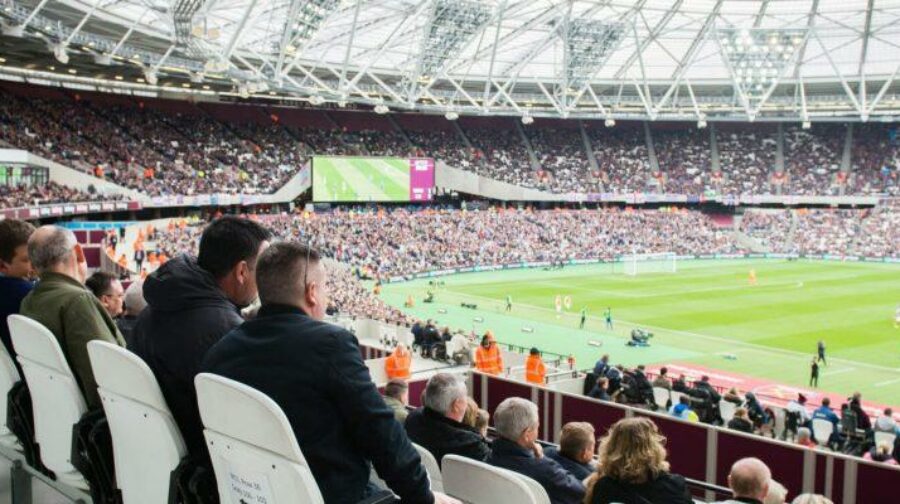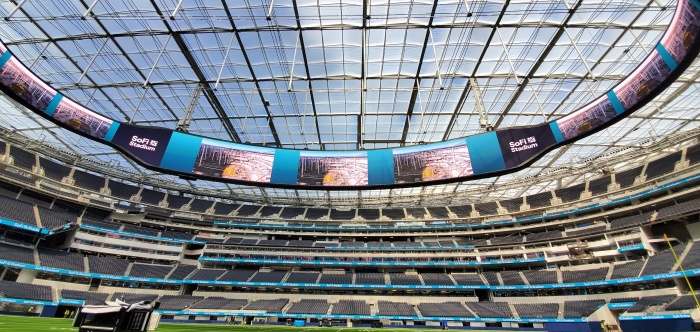The presence of sports fans in the stadium adds on overall spectacle with their cheers of unrelenting support for their teams. Over the years, franchises have built loyalty, yet today’s fans are more fluid, open to change, and seeking new entertainment experiences. Their loyalty is no longer guaranteed, and this shift is forcing the designers of sports venues to change their approach. Sports organisations and their architects are exploring new ways to ensure that live sports can compete with the proliferation of entertainment options available to today’s consumers.
What’s impacting live sports experience in stadiums ?
Over-the-top (OTT) streaming platforms, online gaming videos, podcasts , social media etc. have a significant impact on live sports in stadiums. As modern-day sports consumption moves forward, the in-person fan experience does not compare favourably to watching a game while sitting in your living room. Fans can now watch any game from anywhere in the world while eating tand drinking their beverages. Furthermore, they can watch the game in spectacular high definition on a big screen while connected to Wi-Fi.
Integration of data and storytelling for sports design
The integration of sports data to drive the fan experience can play a huge role in achieving this. Architects can use data about fan preferences to create stadium design bridge the gap between digitally enhanced and live sports experiences.
“Think of the venue instead as a storytelling medium.” Everyone who walks in will participate in the storytelling taking place in that moment and space. This unlocks tremendous, exciting potential around what we can do with those spaces and how we can drive interest in attending games,” says Abe Stein, head of innovation at Sports Innovation Lab. He further added that team owners and designers need to understand what the data tells them about what the audience wants, then they can design the ideal game-day experience.
“Understanding the demographics and experiences fans are looking for opens opportunities to partner with unconventional sponsors’, says Bill Johnson, Design Principal for HOK’s Sports + Recreation + Entertainment practice.

Combining togetherness with data for sports design
Research shows that people are also drawn to the live sports experience for the power of togetherness and experience of the venue. The thrill of standing shoulder to shoulder with other fans, on your feet as the game clock expires, as your team buries the buzzer-beater, is inimitable and irreplaceable. It’s this feeling of shared experience and the “power of togetherness” that keeps live sports, with attendant fans, a primary pillar of the sports industry.
Spectators are drawn due to;
- Personal identification with the team
- Feeling of togetherness
- The ability to have experiences that are unique to the stadium
- Experiences that match their personal interests
- Live entertainment options before, during, and after the game, and
- The opportunity to sit with fans who share their interests
Integration of data can help understand historical attendance levels for specific event categories. This is important information for predicting audience attendance levels. With data gathered from digitally-oriented stadiums and interactive fan experiences, teams can gather important information about who’s sitting in their stadium seats.
Bill Johnson, the design principal for HOK’s Sports + Recreation + Entertainment practice, described how fan data about the power of togetherness and his recent experience implementing new seating options challenge the traditional practice of assigning all fans to specific seats. He has experimented by assigning an entire section for a group, with soft seating and lounge areas interspersed. “The capacity is the same, but the value goes up and the social experience is much better,” said Johnson. “Every time we have done this, it has been the first thing to sell out and people have paid a premium,” he said.
Application of AR, VR & AI in sports design
Augmented and Virtual reality are being used in sports stadiums around the world, including Major League Baseball and soccer leagues.To cite an example, German football giants Bayern Munich were looking to modernise their Allianz Arena football stadium in an effort to engage fans through a more connected stadium experience. The Stats Perform AI team helped the club power the new video walls and 1,200 screens around the stadium with compelling match content that engaged fans through real-time match statistics.
Adaptation of AR, VR AND AI across sports stadiums;
- AR-mapped travel guide for fans to guide the street to reach the sports center or inside to find their seats and discover the stadium
- Hawk-eye virtual reality for visual tracking of the ball’s or other objects’ trajectory to predict its most probable direction.
- VR for on-field ruling is generating full 3D recreations of game plays in questions, giving referees the proper information needed to make the right call
- In the stadium, AR-based sports data points are being used to display player stats and game narratives
- Infinity Screen is being used to showcase additional on-field angles, replays, and other captivating graphics that help illustrate what’s happening in the game

Abe Stein, head of innovation at the Sports Innovation Lab expects AR to play a more prominent role in live events, as it translates what fans get from their mediated TV and digital experiences to the live experience in a venue. ‘AI technology will be essential for knowing who is in a venue, what they are doing and how to enhance their experience,’ he said.
In the future, immersive virtual technology will improve further. Stadiums need to be wired for virtual spectators, who can then experience matches and atmosphere through VR products .
Balancing data integration with authenticity in sports design
There’s no denying the role of data and technology in understanding the needs of fans and designing sports venues that respond to those needs. Yet research also shows people crave meaning and authenticity on a deeply evolutionary level. Authenticity translates the feelings of togetherness and cohesiveness of a collective of individuals. A well designed stadium can make the crowd feel and act as one. The main challenge for sports architects and designers is to find the perfect balance between keeping a new stadium authentic while planning for future innovation.
According to Johnson’s intuition after 40 years of experience in designing these buildings is that people crave meaning and authenticity on a deeply evolutionary level.
“There’s an old quote in the design industry that says stadiums are modern-day cathedrals because they are symbolic of the communities in which they were built,” said Johnson. “But I’m seeing a shift from wanting to do something iconic to something authentic.” Johnson believes younger fans want to align themselves with organizations that share their values, which include caring about the environment and the local community.
A stadium must be perceived as much more than a place for a three-hour sporting event. The focus needs to be on whether that stadium can create jobs and open new amenities. The combination of maintaining a local identity, referencing history and focusing on fan emotion should be the aim of the architects. The stadium must have an identity that fans can form special bonds with.
References;
bdcnetwork.com, sportsbusinessjournal.com, sportsbusinessjournal.com, sporttomorrow.com, statsperform.com

